Malik Ambar is one of the lesser known characters in the history of Maharashtra and therefore of India. He has impressive successes of his credit. He challenged the great Mughal Empire, which hated him as much as it admired this exceptional warlord. It is, in the history of India, one of the characters that I prefer. He is intelligent, tolerant and never lets himself be fooled by fate.
The African life of Malik Ambar
Malik Ambar was born in Ethiopia by the name of Chapu. He was born in approximately 1548 in the Hararghe region in the eastern part of Ethiopia. He is part of the Oromo ethnic group.
Some historical reminders
In the 16th century, Ethiopia was ravaged by wars. The sultanate of Adil, which since the 14th century has been trying to conquer new territories in the Horn of Africa, has been waging a merciless war. One of the means of reducing contestation and putting an end to the conflict is to enslave all the men of the tribes encountered.
The Portuguese priest Gonçalo Rodrigues mentions that “between 10 or 12,000 slaves” are sold each year by the sultanate. Many local tribes did not recover. This is the case with Oromo, the tribe of Malik Ambar.
Slaves were sent to the Ottoman Empire, Persia, Arabia, India and Ceylon (Sri Lanka).
From birth to enslavement
As we have said, Malik Ambar was born around 1548 in a war-torn area. We have little information on Malik Ambar’s life in Ethiopia.
Two theories clash as to the enslavement of young Malik.
The former say that Chapu is the last son of a big family, which forced his parents to sell him to slave traders. There is no historical evidence of this version.
Others say that around the age of 12, Chapu was captured by enemy soldiers during an intrusion raid on Oromo territory. Even though there is no formal proof of this version, it looks more like what the generals of the Sultanate of Adil practiced.
What is certain is that he was taken to the port of Zeila (near Djibouti). He was embarked in a slave ship bound for Mocha (Yemen). It is there that it will be bought by a merchant by the name of Kazi Hussein. With him, he went up the Red Sea until reaching the port of Jeddah, near Mecca.

Malik Ambar
From Mecca to Baghdad
In Mecca
During his journey between Zeila and Mecca, the young Chapu became a Muslim. Was he forced to do it? Did he understand the advantages of this conversion? Nobody knows. On the other hand, becoming a Muslim in a Muslim world has certain advantages. He was assigned to less degrading duties and received an education.
We don’t know anything about his years in Mecca but what we do know is that he took an inspiration from irrigation system seen in Mecca to create the Nahr-e-Ambari (we’ll get to that a bit later).
In Baghdad
In the early 1560s, still under the name Chapu, it was sold and resumed on the road through Arabia to Baghdad. At that time, the city was under the domination of the Ottoman Empire. Baghdad is the biggest and most beautiful city that Malik Ambar has seen in his life. In the Baghdad slave market, he was bought by a merchant who sees him only as a financial opportunity. Indeed, he will quickly sell his slave to another merchant with a capital gain.
Beginning of his education
This is where Chapu met the first good person who changed his life. He was purchased by Khwaja Mir Baghdadi, better known as Mir Qasim. He renamed him Ambar after the name of the amber gemstone. It is also Mir Qasim who educated Ambar. He started learning to read, write and finance. Ambar learnt Arabic and Persian, which gives him access to an important literature. He was also be keen to immerse himself in the different cultures that make up this cosmopolitan city. Radhey Shyam wrote in his 1968 book Life and Times of Malik Ambar that Mir Qasim treated Ambar “like his own son with the greatest generosity and kindness”.
New journey to India
Mir Qasim decided in 1571 to take Ambar with him on his journey to India. Mir Qasim’s intentions are unclear on this decision. Did he want to keep Ambar away from his son’s jealousy? Did he want to get a good deal by selling Ambar? Or did he want this one to have more possibility of evolution?
In any case, upon their arrival in India, Mir Qasim sold Ambar to Mirak Dabir, known as Chengiz Khan.
Malik Ambar’s early years in India
In the beginning of power
Chengiz Khan is not just a usual person. First, he is a Habshi. That is to say a former African slave. In the 16th century, there were many freed African slaves in Maharashtra. He is also the peshwa (Prime Minister) of the Ahmednagar Sultanate. Ambar was initially be one of Khan’s many slave soldiers. But his stature, his presence and his quick-wittedness pointed it out. He passed to the personal service of his master. A relationship of trust and friendship is formed between the two men. Ambar named his second son Chengiz.
Ambar learnt all the basics of managing a state, the army and finances in contact with Chengiz Khan. He especially learnt the rules of the court and intrigues at the most at the state level.
In 1574, Khan was assassinated by court officials. His wife freed Ambar. Once free, Ambar had a choice. Either he joined the army of the sultanate, but at a lower rank or he became a mercenary.
Maharashtra, in the time of Malik Ambar
Ambar arrived in the small Portuguese port of Chaul in Konkan, coastal region of current Maharashtra. Due to its location, Maharashtra has always been a meeting place between religions and cultures. At the time of Ambar, Hindus, Muslims, Buddhists, Jains and Christians rubbed shoulders without any problem. In this region, we spoke Marathi, Hindi, Persian, Arabic, Portuguese. Ambar made this territory as his adopted country and knew every nook and cranny, every town, village, valley and mountain. It is by knowing this diversity and respecting it, that Ambar became a great head of state.
Malik Ambar, mercenary against the Mughals
The political situation in North India
Northern India has been ruled by the Delhi Sultans for over 3 centuries. But in 1526, a descendant of Tamerlane, Babur moved to Delhi to establish what would become the Mughal Empire. His descendants will all have the will to invade the region of Deccan (central India). The third Mughal emperor, Akbar will be the first to descend to central India.
Defence of the Sultanate of Bijapur
Malik Ambar decided to become a mercenary. His natural ease in leading men allowed him to build up a sizeable army of mercenaries.
The first feats of arms of this army were attributed to the Sultanate of Bijapur. Between 1580 and 1590, Ambar was at the service of the regent Chand Bibi to ensure his protection and put down the rebellions that have broken out. He was the son of her who gave the title of Malik (king or chief in Arabic) to Ambar.
Chand Bibi after leaving the Sultanate of Bijapur to his son returned to Ahmednagar. The northern armies begin to prepare for an invasion.
Defence of the Sultanate of Ahmednagar
From April 1595, Akbar took authority to get involved in Deccan region. He began by using diplomacy to succeed in subduing the Deccan sultanate. The emperor sent an emissary to the court of Burhan Nizam Shah II, the elder brother of Chand Bibi, the sultan of Ahmednagar. He refused to meet Akbar’s ambassador.
Mughals are very sensitive to lack of respect. This is why Akbar ordered his son, Prince Daniyal, to correct the sultan. He died shortly after. His son did not stay in power for long, as he was killed in a battle against the Sultanate of Bijapur. A period of instability began. Chand Bibi put an end to it by putting the second son of Burhan Nizam Shah I in power.
The first battle against the Mughals
At the end of 1595, Akbar’s army arrived near Fort Ahmednagar. Malik Ambar was disappointed with the lack of recognition he received from the Sultan of Bijapur, so he decided to help Chand Bibi. The latter had taken control of the fort of Ahmednagar. He rode with 150 riders to returned to Ahmednagar.
Together, they repulsed the Mughal armed power for the first time. She began a siege around the fort. Malik Ambar and his army of horsemen succeeded in breaking through this siege with stealthy night attacks. For 4 years, the fort resisted the siege of the Mughal army.
In 1599, a rumour settled in the fort. Chand Bibi would be ready to offer the fort and the sultanate to Akbar. Officers decided to eliminate Chand Bibi. Without it, the troops were disorganized and on August 16, 1600, the Mughal army entered the fort. An armistice is signed and the suzerainty of Akbar is recognized over the sultanate of Ahmednagar.
The rise of Malik Ambar to the highest rank in the Sultanate of Ahmednagar
The time of court intrigues
After the fall of the fort of Ahmednagar, Malik Ambar went underground to fight against the Mughal empire. In 1600, his army numbered over 7,000 men. He used guerrilla tactics to attack the Mughal lines north of the sultanate. But his ambition was more important than being a little rebel in the boot of the empire. He wanted his name to be known throughout imperial territory.
He therefore undertook to revive the sultanate of Nizam. For this, he went to Bijapur to look for the nephew of the last sultan. And to be sure of being named Prime Minister, he got his daughter married to this last prince. The new sultan, son-in-law of Malik Ambar, appointed him to the post of Prime Minister. Thanks to this, he was able to carry out the reconstruction of the sultanate around the detestation of the Mughal Empire.
From regency to glory
Malik Ambar had to fight to keep his place because many enemies wanted to take his place.
In 1605, the Mughal Emperor Akbar died. Malik Ambar sees it as an opportunity to declare the independence of the sultanate from Mughal influence. Prince Salim becomes Emperor, Jahangir cannot let this affront pass. A new war begins between the empire and the sultanate. Until the death of Malik Ambar, the Mughals was not able to enter the Deccan region.
Jahangir, the great Mughal hated him so fiercely that he asked an artist to paint himself throwing arrows at Malik Ambar’s decapitated head. A fantasy that never become truth.
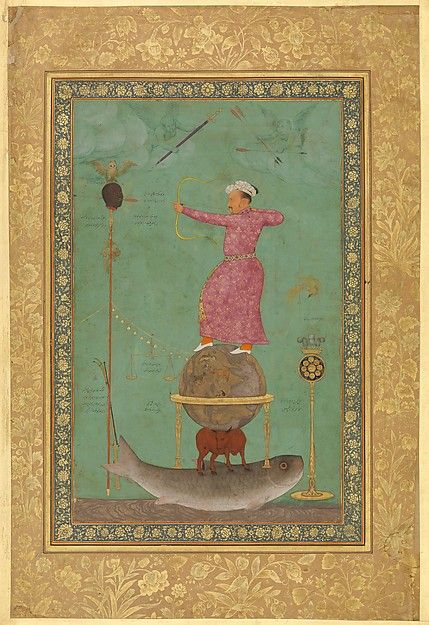
Meanwhile, Malik Ambar also had to deal with intrigues at court.
Murtaza Nizam Shah II was beginning to take a dim view of Malik Ambar’s influence on the sultanate. He also wanted to stop being a puppet. Married to Malik Ambar’s daughter, He had her assassinated to send a message. Malik Ambar was enraged, went to court and killed the Sultan and his mother. He put the son of the assassinated sultan, Burhan Nizam Shah II on the throne.
Having become the new regent, he decided to build a new city north of Ahmednagar. He transferred his capital there and Khadki in fact became the new capital of the Nizam Sultanate.
He continued to fight against the Mughals all his life while developing his kingdom.
On May 11, 1626, he died at the age of 80. He was buried in a tomb just outside Khuldabad, the former Sufi capital of India.
The legacy of Malik Ambar
Due to its political importance, Malik Ambar has shaped a territory and ideas. He also left an important architectural heritage.
His political heritage
Maharashtra is a mosaic of different beliefs and peoples. Malik Ambar was the first to unite behind the same flag, Muslims, Hindus and Christians (the Habshis). Thanks to his diplomatic skills and his tolerance, he succeeded in supporting different communities in his capital Khadki (Aurangabad today). He finally taught the methods of guerrilla warfare to the Marathas who applied it with Chatrapati Shivaji in the following century against the Mughals.
The architectural heritage
Malik Ambar used his administrative skills in the formation of his capital, Khadki. He endowed it with an irrigation system that brought the necessary water to the city, the Nahr-e-Ambari. This 8-kilometer-long system between the source and the city works only by the force of gravity and is still in operation today. Thanks to this ingenious system, the city of Khadki had many lush gardens. A feat in the arid region of Aurangabad. One can see this system by visiting Panchakki.
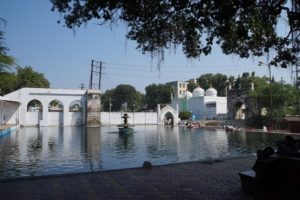
For harmony between the communities, he built building for each of them in order to be able to meet and organize religious festivals. The Town Hall was the monument reserved for Christians and the only one that still exists.
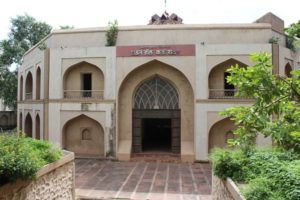
In 1616, Malik Ambar’s army won a major battle against the Mughal Empire. To celebrate it, he built what is now called the Bhadkal gate (Bhadkal gate or Bhadkal Darwaza). This triumphal arch has a large balcony where musicians and singers were playing during celebrations.
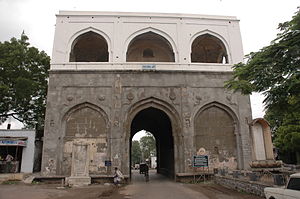
He built his palace near the Bhadkal gate. His palace consisted of 9 buildings. This is why it’s name is the Naukhanda Palace (nau = nine, khanda = place, place). Unfortunately, in this palace all that remains is the majestic door, rest of the part is now under a collage.
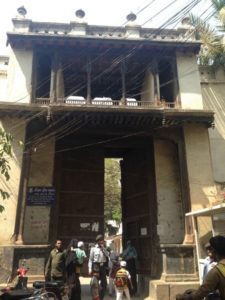
Malik Ambar has left his mark on the history of Maharashtra and India. Unfortunately, it is forgotten nowadays.
We invite you to discover more about this person and his heritage sites in a Facebook community. Come and discover it here.


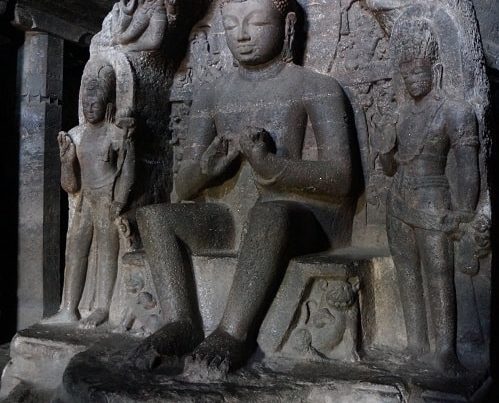
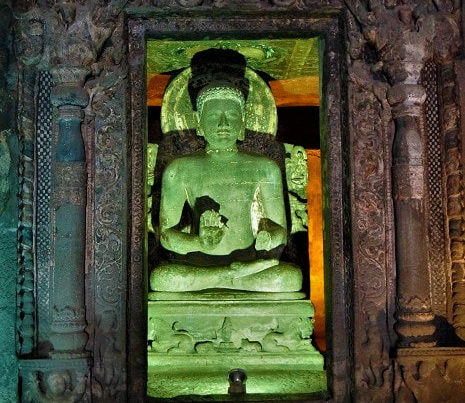
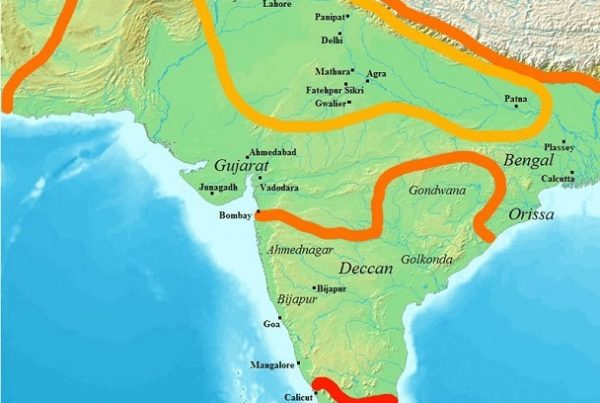
Join the discussion 2 Comments